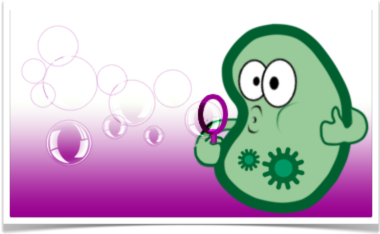Team:TU Delft/Project/solubility
From 2010.igem.org
(→Hydrocarbon Solubility) |
(→Hydrocarbon Solubility) |
||
| Line 3: | Line 3: | ||
==Hydrocarbon Solubility== | ==Hydrocarbon Solubility== | ||
[[Image:TUDelft_Emulsification.png|300px|right]] | [[Image:TUDelft_Emulsification.png|300px|right]] | ||
| - | Spilled oil spreads rapidly in the environment. However, the hydrocarbons in the oil can't dissolve in the water and will remain on the water's surface or adhere to soil particles. | + | Spilled oil spreads rapidly in the environment. However, the hydrocarbons in the oil can't dissolve in the water and will remain on the water's surface or adhere to soil particles. Hydrocarbons such as octane will only reach a mole fraction of about 1.5 × 10<sup>-7</sup> in water. This low solubility makes microbiological degradation challenging seeing as microorganisms will reside in the water phase. Nevertheless, a wide range of microbes including bacteria, fungi and yeasts are able to consume hydrocarbons, for evolution has equipped them with a variety of systems to improve the mass transfer from the hydrophobic phase. |
| - | These microorganisms have been found to produce biosurfactants. | + | These microorganisms have been found to produce biosurfactants. Proteins that increase the surface area of hydrophobic contaminants in soil or water and thus increase their aqueous solubility and consequently their microbial degradation. The biosurfactants also enable the organisms to increase their hydrocarbon uptake. |
| + | |||
| + | ==Continue Reading== | ||
* [[Team:TU_Delft/Project/solubility/parts|Parts]] | * [[Team:TU_Delft/Project/solubility/parts|Parts]] | ||
* [[Team:TU_Delft/Project/solubility/characterization|Characterization]] | * [[Team:TU_Delft/Project/solubility/characterization|Characterization]] | ||
* [[Team:TU_Delft/Project/solubility/results|Results and Conclusions]] | * [[Team:TU_Delft/Project/solubility/results|Results and Conclusions]] | ||
Revision as of 07:49, 20 October 2010
Hydrocarbon Solubility
Spilled oil spreads rapidly in the environment. However, the hydrocarbons in the oil can't dissolve in the water and will remain on the water's surface or adhere to soil particles. Hydrocarbons such as octane will only reach a mole fraction of about 1.5 × 10-7 in water. This low solubility makes microbiological degradation challenging seeing as microorganisms will reside in the water phase. Nevertheless, a wide range of microbes including bacteria, fungi and yeasts are able to consume hydrocarbons, for evolution has equipped them with a variety of systems to improve the mass transfer from the hydrophobic phase.
These microorganisms have been found to produce biosurfactants. Proteins that increase the surface area of hydrophobic contaminants in soil or water and thus increase their aqueous solubility and consequently their microbial degradation. The biosurfactants also enable the organisms to increase their hydrocarbon uptake.
 "
"
